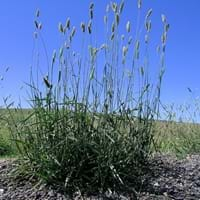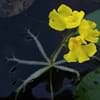Life Span
Perennial
Perennial
Origin
Northeastern United States, Mid-Atlantic United States, Southeastern United States, North-Central United States, Central United States, South-Central United States, Canada
North America, Europe
Types
Not Available
Phalais arundinacia
Canay Grass
Phalaris aquitica
Phalaris minor
Phalaris Paradoxa
Habitat
Moist Soils, Terrestrial, Upland, Wet lands
Cultivated Beds
USDA Hardiness Zone
3-11
4-8
AHS Heat Zone
11-1
Not Available
Sunset Zone
21,22
Not Available
Habit
Thicket/Colonizing
Clump-Forming
Flower Color
White
Yellow
Flower Color Modifier
Not Available
Bicolor
Fruit Color
Brownish Red
Black, Green, Dark Green
Leaf Color in Spring
Green, Dark Green
Dark Green
Leaf Color in Summer
Green, Dark Green
Light Green
Leaf Color in Fall
Green, Dark Green
Dark Green
Leaf Color in Winter
Not Available
Tan, Brown
Leaf Shape
Heart-shaped
Grass like
Plant Season
Spring, Summer, Fall
Spring, Summer, Fall
Sunlight
Full Sun, Partial Sun, Partial shade
Full Sun
The pH of Soil
Acidic, Neutral
Acidic, Neutral, Alkaline
Soil Drainage
Average
Average
Bloom Time
Summer
Late Spring, Early Summer, Summer, Late Summer
Tolerances
Wet Site
Wet Site, Drought, Salt
Where to Plant?
Container, Ground, Pot
Container, Ground
How to Plant?
From Rhizomes, Root Division
Root Division, Rooted stem cutting
Plant Maintenance
Medium
Medium
Watering Requirements
Needs Very high moisture
Average Water Needs
In Summer
Lots of watering
Lots of watering
In Spring
Moderate
Moderate
In Winter
Average Water
Average Water
Soil pH
Acidic, Neutral
Acidic, Neutral, Alkaline
Soil Drainage Capacity
Average
Average
Sun Exposure
Full Sun, Partial Sun, Partial shade
Full Sun
Pruning
Remove damaged leaves, Remove dead branches, Remove dead leaves
No need to prune, Remove damaged leaves, Remove dead branches, Remove dead leaves
Fertilizers
All-Purpose Liquid Fertilizer
All-Purpose Liquid Fertilizer, Apply N-P-K
Pests and Diseases
bees
Not Available, Red blotch
Plant Tolerance
Drought
Drought
Flowers
Showy
Insignificant
Flower Petal Number
Single
Single
Foliage Texture
Medium
Not Available
Foliage Sheen
Matte
Matte
Attracts
Bees, Flies, Turtles
Aphids, Crickets, Mites, Snails
Allergy
allergic reaction, Pollen
Not Available
Aesthetic Uses
Bog Garden, Showy Purposes, Water gardening, Wild gardens
Borders, Ground Cover
Beauty Benefits
Not Available
Not Available
Environmental Uses
Air purification
Air purification
Medicinal Uses
Insect Bites, Treating fever
Not Available
Part of Plant Used
Flowers, Leaves, Root
Not Available
Other Uses
Grown in botanical gardens as a specimen, Used as Ornamental plant
Not Available
Used As Indoor Plant
Sometimes
No
Used As Outdoor Plant
Yes
Yes
Garden Design
Container, Water Gardens, Wildflower
Edging, Feature Plant, Groundcover, Mixed Border
Botanical Name
SAURURUS cernuus
PHALARIS
Common Name
Lizard's Tail
Phalaris
In Hindi
Saururus cernuus
Phalaris
In German
Saururus cernuus
Phalaris
In French
Saururus cernuus
Phalaris
In Spanish
cernuus Saururus
Phalans
In Greek
Saururus cernuus
Phalans
In Portuguese
Saururus cernuus
Phalans
In Polish
Saururus cernuus
Phalans
In Latin
Saururi cernuus
Phalaris
Phylum
Tracheophyta
Tracheophyta
Class
Magnoliopsida
Magnoliopsida
Family
Saururaceae
Poaceae
Clade
Angiosperms, Magnoliids
Angiosperms, Commelinids, Monocots
Tribe
Not Available
Poeae
Subfamily
Not Available
Phalaridinae
Number of Species
Not Available
Difference Between Saururus cernuus and Phalaris
If you are confused whether Saururus cernuus or Phalaris are same, here are some features about those plants to help you choose better. Many people think that these two plants have the same characteristics, but one can see Saururus cernuus and Phalaris Information and learn more about it. Fertilizers required for proper growth of Saururus cernuus are All-Purpose Liquid Fertilizer, whereas for Phalaris fertilizers required are All-Purpose Liquid Fertilizer and Apply N-P-K. Hence, one should know the basic difference between Saururus cernuus and Phalaris if you are planning to have them in your garden to enhance its beauty.
<
Flowering PlantsImportance of Saururus cernuus and Phalaris
Want to have the most appropriate plant for your garden? You might want to know the importance of Saururus cernuus and Phalaris. Basically, these two plants vary in many aspects. Compare Saururus cernuus and Phalaris as they differ in many characteristics such as their life, care, benefits, facts, etc. Every gardener must at least have the slightest clue about the plants he wants to plant in his garden. Compare their benefits, which differ in many ways like facts and uses. The medicinal use of Saururus cernuus is Insect Bites and Treating fever whereas of Phalaris is Not Available. Saururus cernuus has beauty benefits as follows: Not Available while Phalaris has beauty benefits as follows: Not Available.
Compare Facts of Saururus cernuus vs Phalaris
How to choose the best garden plant for your garden depending upon its facts? Here garden plant comparison will help you to solve this query. Compare the facts of Saururus cernuus vs Phalaris and know which one to choose. As garden plants have benefits and other uses, allergy is also a major drawback of plants for some people. Allergic reactions of Saururus cernuus are allergic reaction and Pollen whereas of Phalaris have Not Available respectively. Having a fruit bearing plant in your garden can be a plus point of your garden. Saururus cernuus has no showy fruits and Phalaris has no showy fruits. Also Saururus cernuus is not flowering and Phalaris is not flowering . You can compare Saururus cernuus and Phalaris facts and facts of other plants too.





